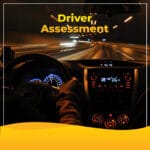Understanding Australian Driver’s Licence Numbers and Their Role in USI Verification

Driver’s Licence is one of the most widely accepted forms of personal identification
In Australia, the driver’s licence is not just a permit to operate a vehicle—it is one of the most widely accepted forms of personal identification. Its importance is further underscored by its role in the Unique Student Identifier (USI) system, which is a national initiative to streamline and secure student records across the country. This article explores the standards and official guidance around driver’s licence numbers, their use as ID, the complexities of their formats, and the process of upgrading licence classes for different vehicle types.
The USI System and Official Guidance
The Unique Student Identifier (USI) is a reference number that creates a secure online record of a student’s nationally recognized training and qualifications. When creating a USI, students must verify their identity using an approved document—one of the most common being the Australian driver’s licence.
The USI official guidance specifies that the driver’s licence must be current and issued by an Australian state or territory. The licence number is a critical data point for identity verification, and it must be entered exactly as it appears on the card, without spaces or additional characters. The USI system cross-checks this information with state and territory databases to confirm the applicant’s identity.
The Structure and Issues of Driver’s Licence Numbers
1. No National Standard
Unlike passports or Medicare cards, there is no single, national format for driver’s licence numbers in Australia. Each state and territory issues its own licences, with unique numbering systems and, in some cases, the inclusion of letters or other identifiers. This lack of standardization can create confusion for both individuals and organizations that rely on licence numbers for verification.
2. State and Territory Variations
Here’s a breakdown of the typical formats by jurisdiction:
- Victoria: Usually 9 digits, numbers only (e.g., 123456789)
- New South Wales (NSW): 8 digits, numbers only (e.g., 12345678)
- Queensland: 9 digits, numbers only (e.g., 123456789)
- South Australia: 7 digits, numbers only (e.g., 1234567)
- Western Australia: 7 digits, numbers only (e.g., 1234567)
- Tasmania: 7 digits, numbers only (e.g., 1234567)
- Northern Territory: 6 or 7 digits, numbers only (e.g., 123456 or 1234567)
- Australian Capital Territory (ACT): 8 digits, numbers only (e.g., 12345678)
Some older licences or special cases may include letters, but the vast majority are numeric. The card number (a separate security feature) is not the same as the licence number and is not used for USI verification.
3. Common Issues
- Data Entry Errors: Because formats vary, users sometimes enter the wrong number (e.g., card number instead of licence number), include spaces, or misread digits.
- State Transfers: When moving between states, drivers are issued a new licence number, which can cause confusion or mismatches in records.
- Expiry and Renewal: Expired licences are not accepted for USI verification, and newly issued licences may have different numbers or formats.
- Privacy Concerns: As a primary ID, the driver’s licence number is sensitive information and must be handled securely to prevent identity theft.
Driver’s Licence as a Form of ID
The driver’s licence is the most commonly used form of photo identification in Australia. It is accepted for:
- Opening bank accounts
- Enrolling in education and training
- Accessing government services
- Proving age and identity in everyday transactions
The licence includes a photo, signature, date of birth, and address, making it a comprehensive identity document. Its widespread acceptance is due to the rigorous verification processes required to obtain and renew a licence.
Upgrading and Endorsements: Licence Classes Explained
Australian driver’s licences are issued in classes that correspond to the type and size of vehicle a person is permitted to drive. The main classes include:
- C (Car): Standard passenger vehicles
- LR (Light Rigid): Small trucks and buses
- MR (Medium Rigid): Larger trucks and buses with two axles
- HR (Heavy Rigid): Trucks and buses with three or more axles
- HC (Heavy Combination): Semi-trailers and articulated vehicles
- MC (Multi Combination): Road trains and B-doubles
- R (Motorcycle): Motorcycles and scooters
Upgrading Process
To upgrade from one class to another (e.g., from car to heavy rigid), drivers must:
- Hold the lower class licence for a minimum period (usually 12 months).
- Pass a knowledge test relevant to the new class.
- Complete practical training and assessment with a registered training provider.
- Meet medical and age requirements for the higher class.
- Submit an application and pay the relevant fees to the state or territory licensing authority.
Some upgrades, such as moving to MC (Multi Combination), require additional experience and advanced training.
Endorsements and Special Conditions
Certain vehicles or driving tasks require additional endorsements, such as:
- Dangerous goods
- Passenger transport
- Driving instructor
These endorsements involve extra training, background checks, and sometimes medical assessments.
The Future: Towards National Consistency?
There have been calls for a national driver’s licence system to reduce confusion and improve security, but as of now, each state and territory maintains its own system. The USI system and other national initiatives rely on cross-jurisdictional data sharing to verify identities, but the lack of a standard format remains a challenge.
The Australian driver’s licence is a cornerstone of personal identification and plays a vital role in systems like the USI. However, the lack of a national standard for licence numbers can create challenges for both individuals and organizations. Understanding the differences in formats, the importance of accurate data entry, and the process for upgrading licence classes is essential for anyone navigating Australia’s licensing and identity verification landscape.
For the most accurate and up-to-date information, always refer to your state or territory’s transport authority and the USI official guidance.
References:








